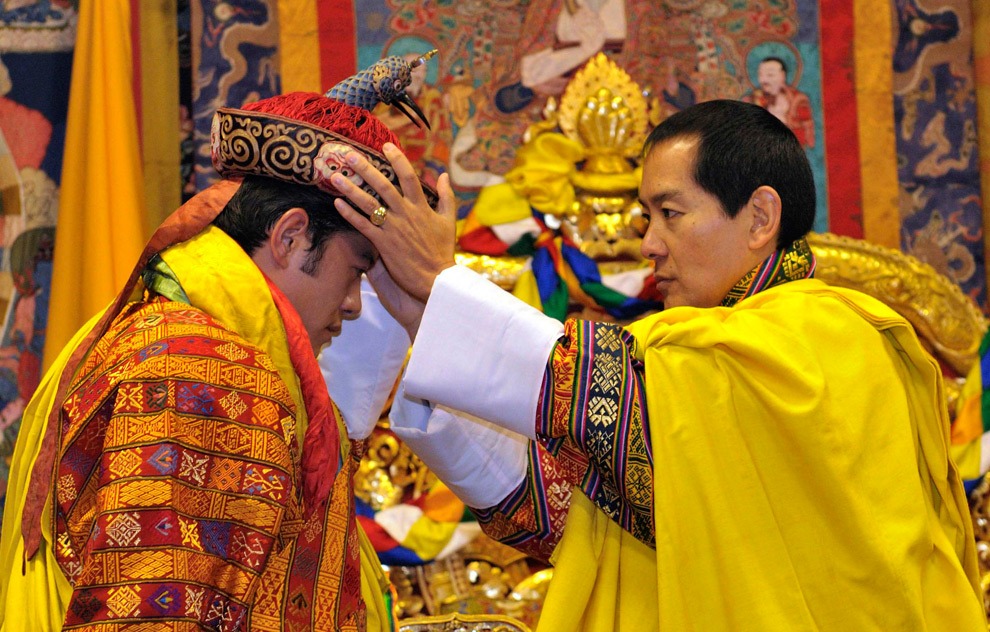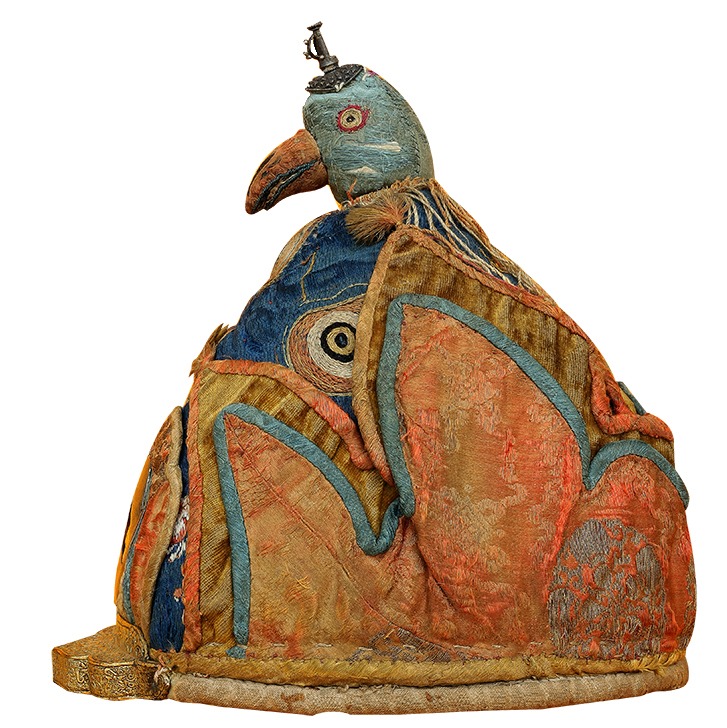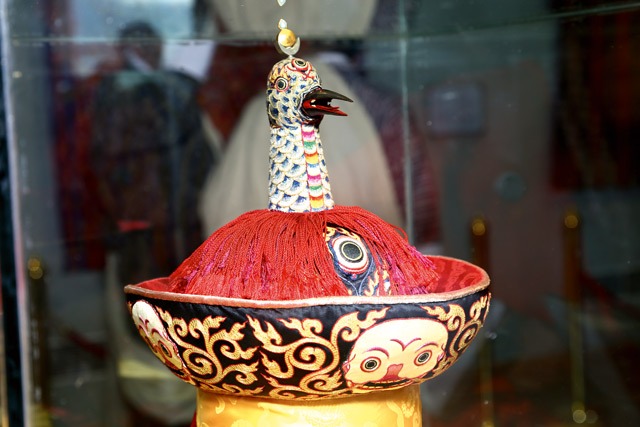A Brief History of the Raven Crown
Throughout the world the raven is seen as a symbol of power, wisdom and intelligence. And so it is in Bhutan, too. Here, the bird is indeed special as it is not just the national bird of the country but it is portrayed as well on the royal crown. The raven’s special status in Bhutan can be traced back to Zhabdrung Ngawang Namgyal – the statesman monk who unified the country of warring factions in the 17th century.

Legend has it that years before he made his journey from Tibet to Bhutan, Zhabdrung is said to have had a vision in which he flew to Pangrizangpa in Thimphu following a raven. The followers of Zhabdrung later understood and interpreted this experience as the instance of Legon Jarog Dongchen leading him to Bhutan. The raven-faced deity Legon Jarog Dongchen, along with Yeshe Gonpa and Pelden Lhamo make up the trio of protectors of Zhabdrung Ngawang Namgyal. From then onwards, the raven-faced Mahakala has since been the protector of Bhutan.

However, it was only in the days of Jigme Namgyel(1825-1881), the father of the first king of Bhutan, that the raven-faced deity found its place as the apex of the crown. The raven crown worn by Jigme Namgyel resembles a tantric hat used during rituals for subjugation of evil forces. It is an appliqué with a blue base, five upturned yellow flaps ending in tassels of hair, three embroidered eyes, a silver dorje (thunderbolt) on the top, a metal sun disc and crescent moon, and a metal plate decorated with mantras as the frontal decoration.
The first king Sir Ugyen Wangchuck (1862-1926) appears wearing a different raven crown in the photos taken during his trip to Tibet in 1904 and later. The raven head has a distinctly protruding sharp beak on the top, with tassels of red threads flowing from its base. The head has on it a crescent moon and sun disc. This crown was also worn by second king Jigme Wangchuck (1903-1952) at the time of his coronation.
During his reign, however, another variation of the raven crown was made. With changes in people’s sensitivities and Bhutan’s international exposure, the esoteric images of skeletal heads that accompanied the first crown were replaced by the mythical bird garuda. This mystical bird associated with tantric deities is considered a positive force and a symbol of subjugation.

There are no pictures though of the third king Jigme Dorji Wangchuck, (1952-1972) wearing a raven crown. The fourth Druk Gyalpo Jigme Singye Wangchuck (1972-2006), too, is rarely seen in public wearing the raven crown.
For the coronation of the fifth king Jigme Khesar Namgyel Wangchuck, another raven crown was prepared. The materials of the crown were blessed in the presence of Zhabdrung’s remains in Punakha Dzong in order to imbue it with the power the raven crown is traditionally believed to possess.
In Bhutan, the raven crown is not only seen as the symbol of Legon Jarog Dongchen and his protection, but also as a representation of the entire Bhutanese spiritual and secular virtues with the monarchs of Bhutan, as custodians, to safeguard and advance the nation.

